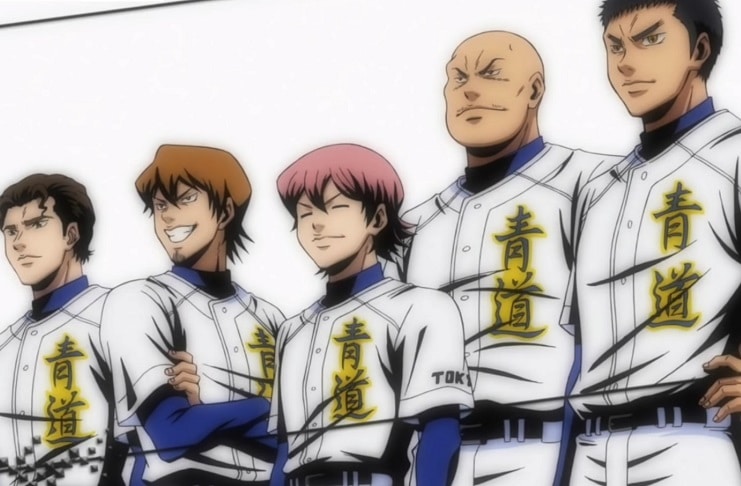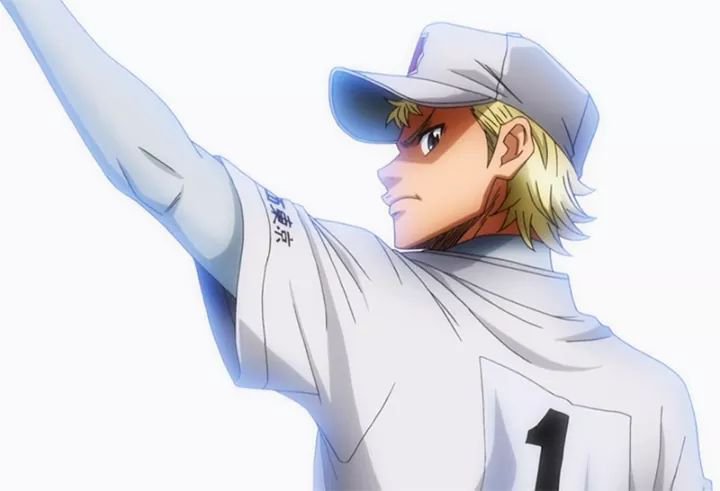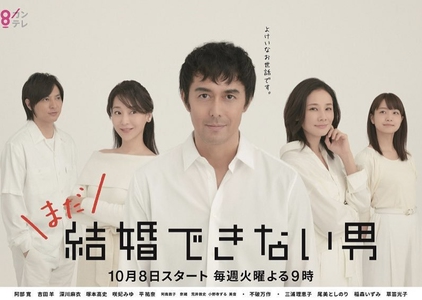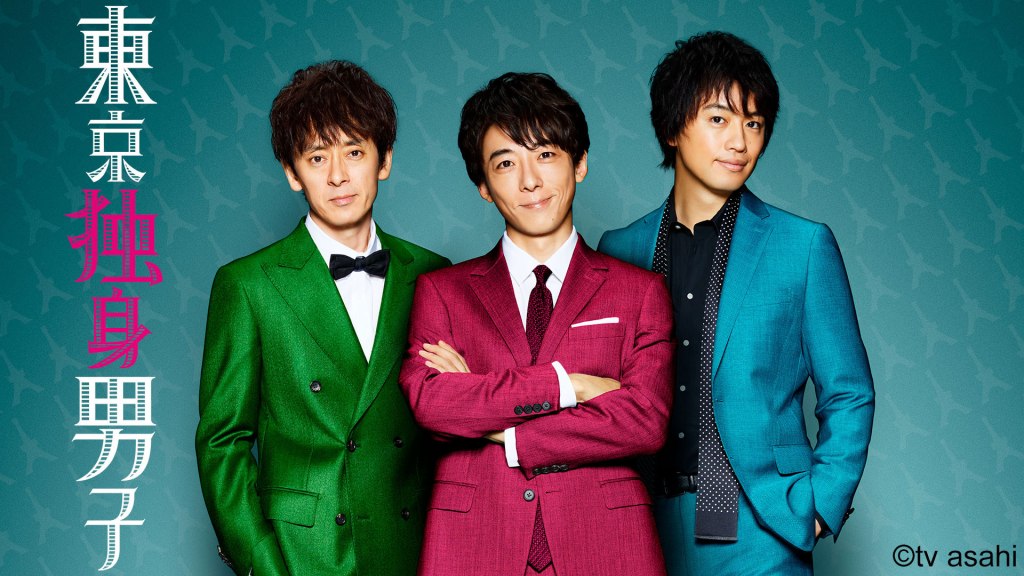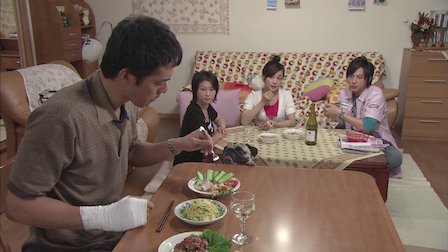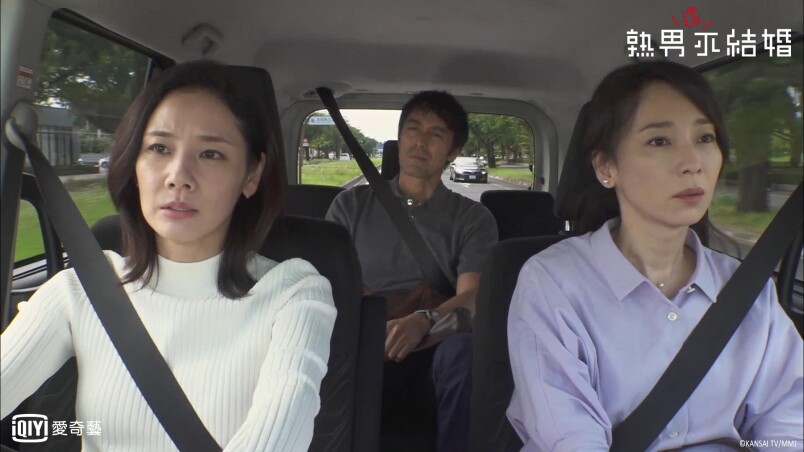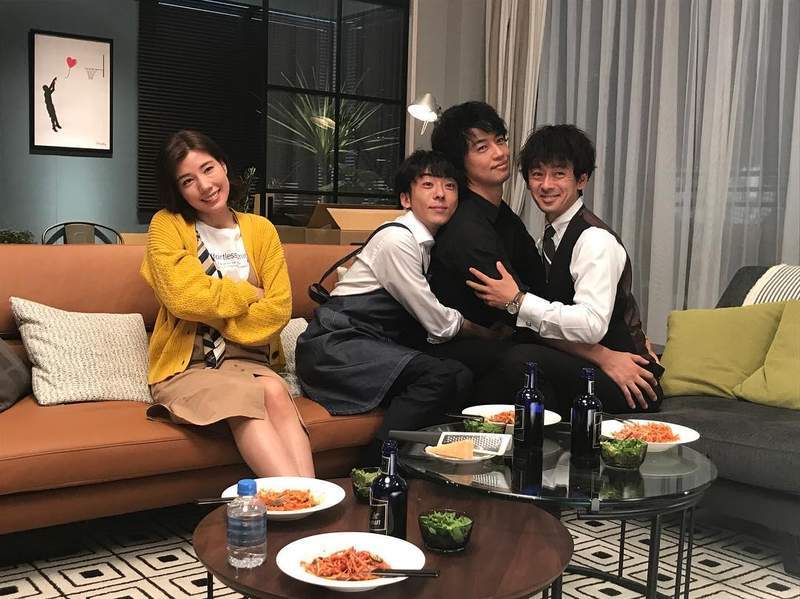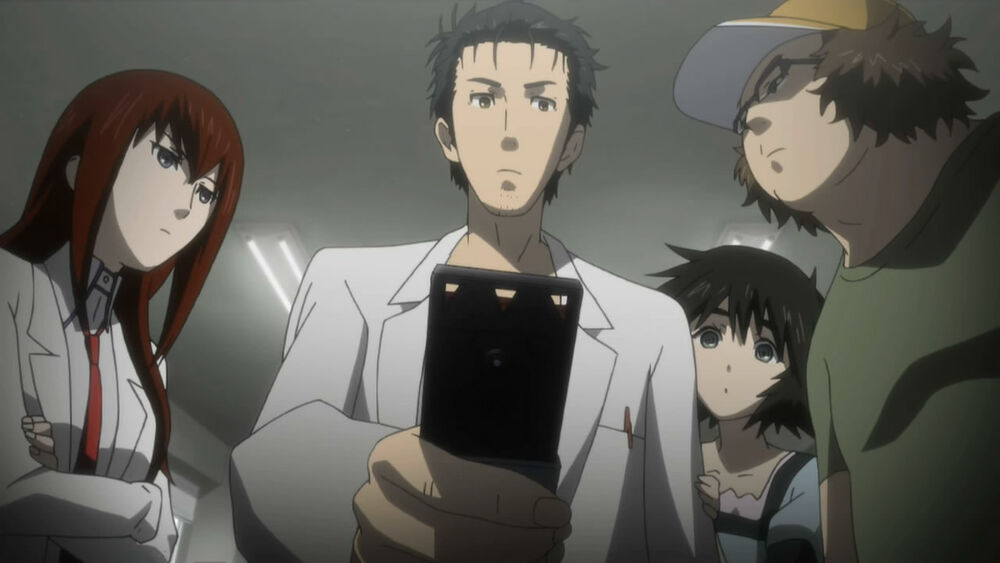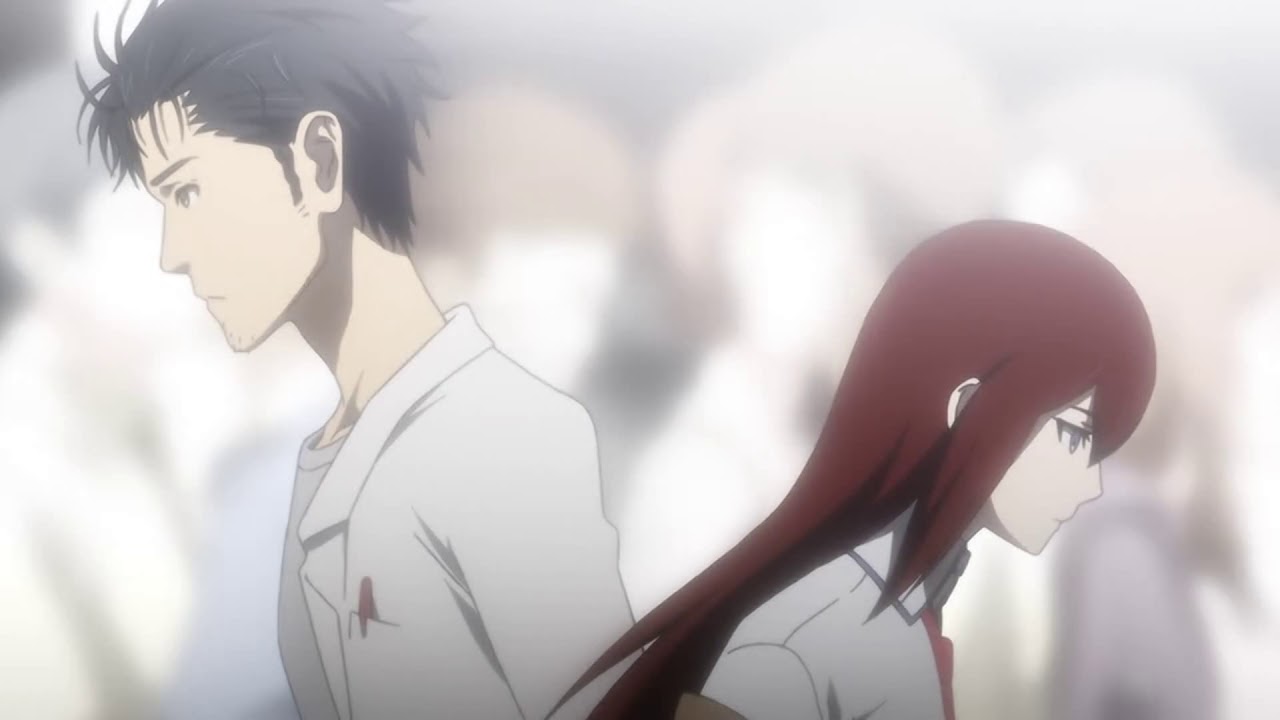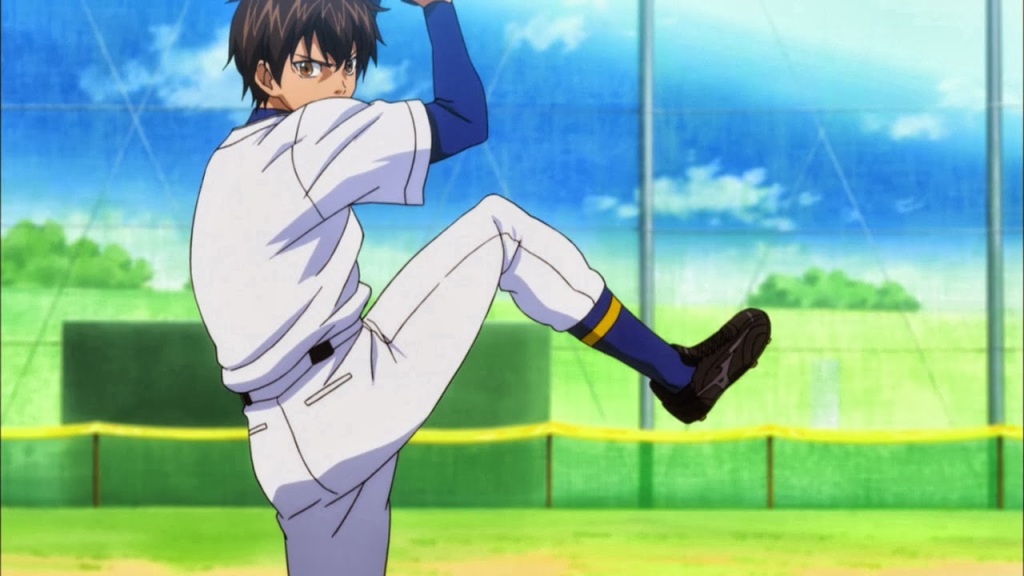
This is partly a personal post, and partly a reflection of a synthesis of the core values of Diamond no Ace that I hold dear. Extremely mild spoilers ahead.
My Relationship with Anime Over the Past Five Years
Over the past five years, I stopped watching anime almost entirely. My reason was that I believed that adulting is dedicating time to actual pursuits that contribute to organic growth and self-improvement, better equipping myself with skills to be able to survive in this world – whether its communication skills to make more friends in real life and to get to know more people, technical competency for being a better lawyer, financial literacy to plan for the future etc. Fitting all of these into my routine meant that I was unable to squeeze out time for anime (and other forms of TV), which was a two-dimensional hobby which just involves me staring at a screen. It was also tough because there remains a dearth of interest in anime in the place I live in and especially, the social circles I run in. It felt like anime was part of a past which was long forgotten and should belong and stay there. While I still told the people I met about the feats of anime as a genre and sought to dispel the misconceptions surrounding the general perception with it, my growing unfamiliarity with the genre diminished my arguments and I became less able to build a persuasive stand on the issue.
Thankfully, with my dedication of time to the other areas of my life, I did manage to achieve small milestones in the areas I was putting time and effort in (which I may elaborate in a separate post another time, if I do sense some interest). Some events did also occur which made me re-think about how I had been going about my life the past five years, and forced me to take a hard look of my habits, mindset and goals. Together with the global pandemic which also gave me more time at home, I suddenly thought about anime again. There were various times where I felt like I missed watching anime, but I still questioned its utility. What is anime to me? Is it just pure entertainment – more of an addiction – and thus merely an unproductive use of time? Was it really escapist in nature – is it really a medium that looks into human beings’ hearts, picks out their innermost desires and plays it in the form of a story across a screen, thus allowing its viewers to experience whatever they can’t in real life for whatever reason, and enabling them to vicariously live life? If there is anything that I learnt from it, can it actually be applicable to not only my life? Is it something that can be applicable to others’ life as well? Can I still be a proponent of anime’s usefulness to the world without knowing the answers to these questions?
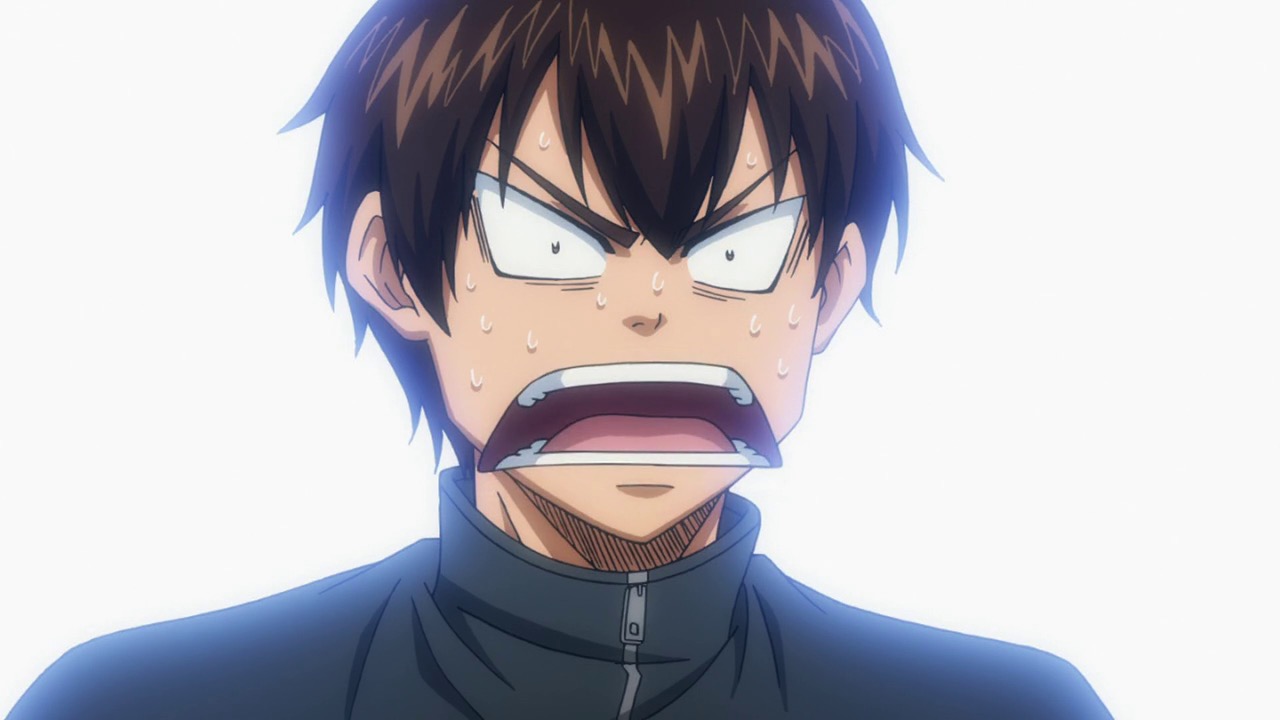
At the same time, the other, non-critical part of my mind saw the various pandemic-triggered lockdowns and work from home arrangements as an opportunity for me to loosen up a bit. Prior to that, my mind had been continually tense – like on a tightrope – trying to make full use of everyday in what I deemed to be a meaningful manner. With more time at home and with the world moving at a much slower pace, I finally had the luxury to think about returning to more time-consuming forms of entertainment. I still recall how addictive anime can be and how it can easily result in days of binge watching if I wasn’t being careful enough with my time. But I also felt that staying away from it was chipping away the parts of me that held on due to my constant interactions with anime – the ability to sense and appreciate subtly shifting emotions, the ability to feel those subtle emotions, the wonderful feeling of seeing good story telling and multi-dimensional character development mesh together and synergize to create such value in entertainment that I am still unable to see or find in the other genres. Staying away from this had perhaps made me into a more callous person, I thought.
So I restarted watching anime and of course I was pleased to find that, there were not only plenty of new anime which looked promising, there were also re-adaptations and second and third seasons of some of the older titles. Titles like Steins; Gate got their next season, which made the reason more holistic and really fleshed out the story and its characters. Series like Attack on Titan and even Haikyuu as well got more seasons – which was always a pleasure given that their preliminary seasons were excellent adaptations to begin with.
But what was the best surprise was that my series most close to my heart, Diamond no Ace, actually got an ‘Act II’ (making it, technically, a third season). And that gave me the motivation to re-watch the series.
It is actually pretty interesting that each rewatch of an anime series really enables the viewer to pick up new subtleties that were not as apparent before. I have briefly mentioned this in my previous Steins; Gate post here. Most importantly, what stands out to me actually reflects the evolution of one’s own tastes and preferences, as well as mindset and values and is perhaps, a mirror of my own personal journey over the past 5 years.
I last watched this series in 2015 to 2016. That’s really 5 or 6 years ago, after which I graduated from university and plunged myself into the challenges and upheavals of real life and tried out many different things.
But now, when I look at Diamond no Ace again, I am even more floored by how precious and valuable such an anime series is. Rereading reviews, and comments on anime forums on Diamond no Ace makes me feel more indignant that there is so little appreciation of this series despite it being about a sport which I understand to be pretty popular in the USA, and despite it being the most realistic portrayal of the struggle of rising to the top and being a champion not only in the real life sports, but also in other aspects of life as well (if you know how to spot the resemblance, of course).
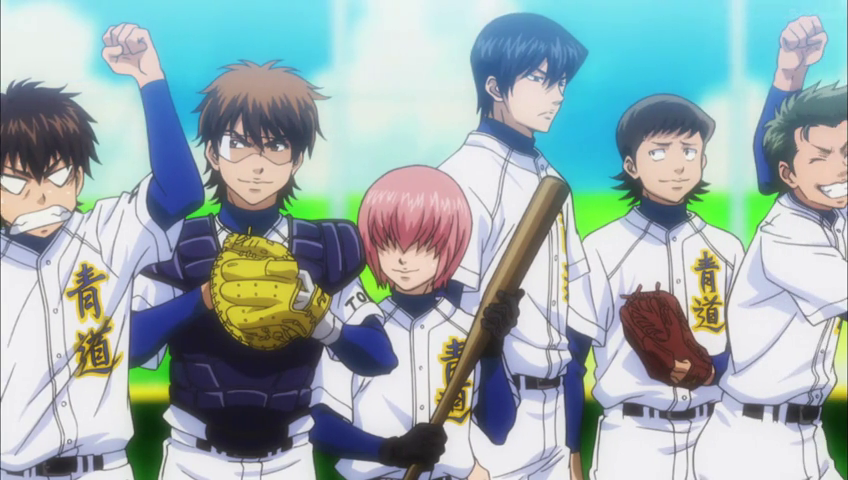
But let’s backtrack. It may be appropriate at this point to include a summary of Diamond no Ace for the uninitiated (it astonishes me that I have not done this on this blog before).
Summary: What is Diamond no Ace About?
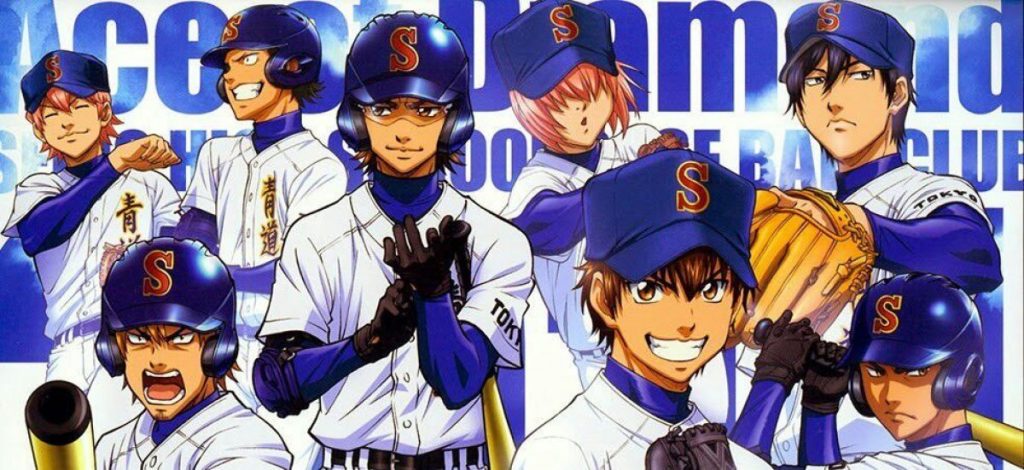
Diamond no Ace is a story which follows Eijun Sawamura, a pitcher who is invited by a scout to Tokyo’s prestigious Seidou High School after seeing the potential in his unusual pitching style and his spirit. Eijun declares he will become ace of the Seidou baseball team, a team with many skilled and talented players. However, he has a rival in the form of Satoru Furuya, a fellow first-year who pitches fastballs at a ‘monster’ speed. Together with other players in the team, the Seidou baseball team aims to defeat the other equally talented and skilled teams to become the champions of Nationals in Japan.
While all of the above sounds like the setting of any typical sports anime, there are many elements in the Diamond no Ace form of storytelling that subvert the conventional storytelling norms of sports anime. In this post, I am going to identify five reasons why, in my honest opinion, Diamond no Ace stands out from other anime – and is in fact head and shoulders above the rest of them.
Reason #1 The main character is trying to play catch-up to his teammates, rather being the one making the sole positive difference to the level of the team.
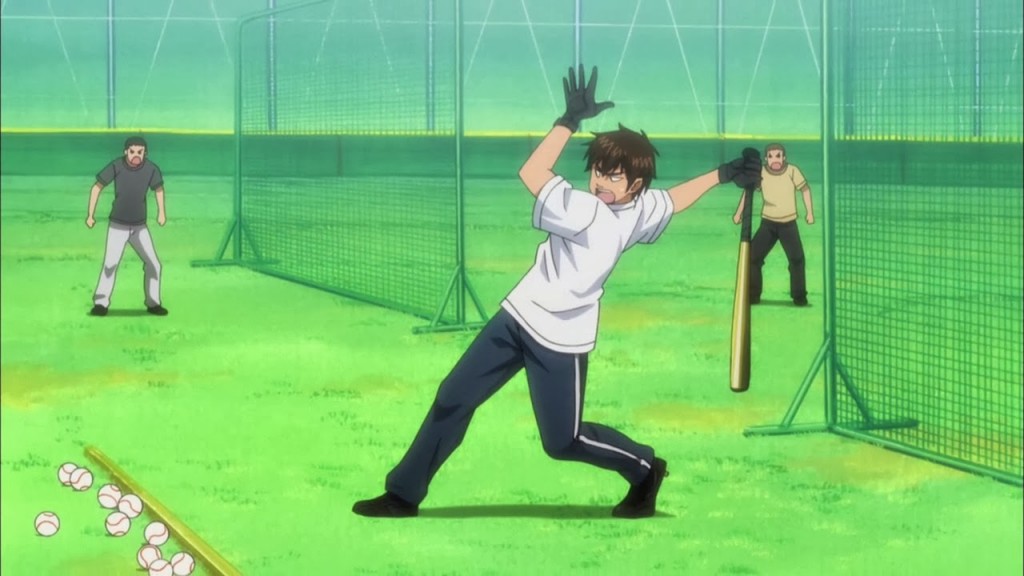
In anime like Kuroko no Basket and Haikyuu!!, the team that the protagonist joins is an all round weak team – most likely a team that has not made past the first few rounds in a national competition i.e. a typically underdog team. The story then focuses on the main protagonist and accentuates how his addition to a team begins to subtly make changes in the team dynamic, the level of the team and together with the team, they jump through rings of fire to reach the top.
In Diamond no Ace, the Seidou baseball team is not actually weak by any objective nature. It is revealed very early on that they are a baseball powerhouse and one of the ‘big’ names of Tokyo. They also have a huge team with many people to choose from, a vast amount of facilities to facilitate training, a good coach and many talented and skillful players in their mix. Most of the regulars have been scouted from all over Japan and brought to the team. The only catch is that they have not been to Nationals in the past 6 years.
When Eijun joins the Seidou team, he is very rough around the edges. He was clueless about the more intricate rules of baseball, could hardly bat or field, and did not even know what kind of pitches he could throw. All he had was a moving fastball, which he did not even recognise as one – he only knew that this was part of his style of ‘going head-to-head with enemy”. It is only when he joins Seidou, when he gets acquainted in the vast talent and skill available in the world of baseball – most of it in the form of his teammates.
Thus this story starts his journey to climb his way to the top of the baseball mound. Eijun starts off with the most basic of training and exercises, deprived of game time as opposed to his teammates as he realises very soon that he has no skills that were useful to the team. What is unique to this story is that Eijun spends a lot of time on screen trying to not drag his teammates down, being inspired by his teammates to work harder and to see his goal of becoming the ace and his newfound goal of being useful to the team as goals that are not mutually exclusive. In fact the skill level difference is so vast that Eijun spends a lot more time watching his teammates play than pitching – something I will elaborate further below in my next point.
Reason #2: It is a story of multiple main characters of a team, and about other teams’ hopes and dreams as well.
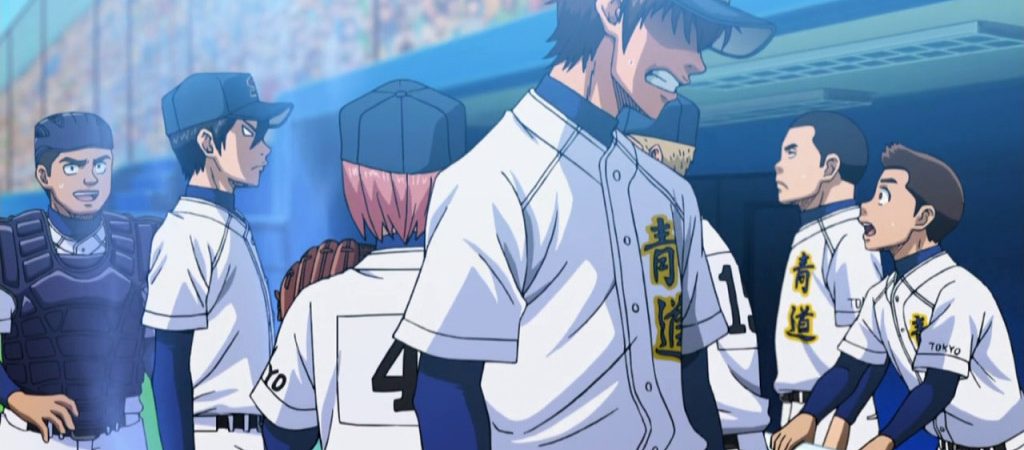
The story is not just about Eijun Sawamura. It is about his rival Satoru Furuya, whose talent for pitching powerful fastballs enables him to keep one step ahead of Eijun and gifts to him more game time than the protagonist and who also continues to grow in a manner that is inspired by and complementary with Eijun’s strengths. It is about the genius catcher Miyuki Kazuya, who is positive, logical, focuses on what is in front of him and also grows in his lead of the pitchers and as well as a core pillar of the team. It is about Mei Narumiya, who comes across as exceedingly arrogant and loud-mouthed, but has the skills to back it up and has gone through his own set of trials and tribulations. It is even about the characters that are normally regarded as “side characters), for example, Isashiki Jun, the guy who initially is the strongest competitor of his more skilful and focused comrade Tetsuya Yuuki (“Tetsu”), but who turns into somebody who single-mindedly focuses on connecting the offense of the game to Tetsu; on how to get on base; on how to push the team to victory; on how to perform his role to the best of his ability so that they can fulfill the goal that everybody dreams of – going to nationals. It is even about the coach, Kataoka-san, whose coaching style focuses on character and team growth of each individual and which the story delves into in greater detail.
I could go on and on about the characters – but you get the point. In Season 2, the story even goes into the characters who are usually on the bleachers and the sideline. The story does not focus on one batch of regulars – the third-years leave the team and new first-years join. The regulars are not set in stone and there is constant renewal. There is hence a sense of resonance with the viewers as they grow together with the characters and are subject to the same forces of life – where old people leave and new people come.
Even for the rival teams, there is always something in each of their backstory that that resonates powerfully with the average person and the feelings of failing at something despite working and trying hard, and those feelings of desperation and powerlessness. I had previously written a post about one of the rival teams, Sakurazawa, whose backstory contains some of these powerful messages.
In contrast, there is a obvious set of core characters for most other shounen and sports anime. The stories usually hesitate either to ‘kill off” people or to render them obsolete (e.g. to ‘graduate’ the seniors and make them leave the team’) and are usually more concerned in tweaking the plot to justify these characters’ continued existence on the team. Moreover, most sports anime are more focused on the growth of the main characters – who again, are usually identified by the writers from the start. Arguably, this may be due to the preference for more compact and efficient storytelling due to practical considerations, for example the inability to procure multiple extensions of the series and therefore having to choose to focus on one or two individuals. But it certainly doesn’t produce the effect that Diamond no Ace has – the feeling that you grow together with the characters (read: not just one or two, but all of them) on their journey, and the sense of satisfaction and accomplishment the viewer feels when they finally achieve certain important milestones.
Reason #3 It is not afraid to show the harsh realities of life – that even if you work hard and even if you are talented, you may fail and not just once.
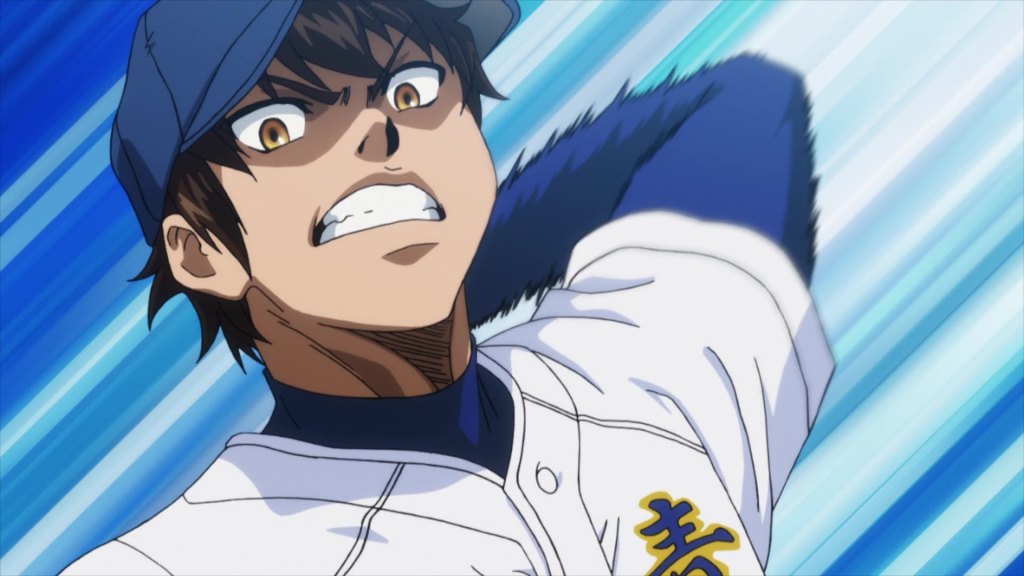
Some mainstream sports anime like Haikyuu and Kuroko no Basket use the same formula – the main character’s team loses in the first game or first final of a major tournament to a major rival team, who is a rival team that gets more backstories than the rest. They have a period of reflection and more training, and then they restart the series of competitions, this time, winning all the matches. All of this concludes in a matter of a few two-cour episodes – perhaps within a total of 75 to 100 episodes. This means that mathematically, the first failure should have occurred within 25 episodes, which seems to be the maximum amount of time that most mainstream viewers’ attention can be held before they start to lose interest if the protagonist does not seem to be ‘epic’ enough.
Unlike Haikyuu or Kuroko no Basket, Diamond no Ace does not hesitate to be bold and go the long way around. Many complaints of the series are around the fact that Eijun’s journey to becoming ace seems to be taking two steps forward and one step back – it is fraught with difficulties as he is surrounded by competition. His development takes a slow start and he is most of the time sidelined while he tries to learn baseball, bit by bit, and what it means to not play for himself but for his team as he gets to familiarise himself with them. He is often often loud-mouthed, confident to an extremity of being not self aware, is the joke of the team, and thus hard to take seriously (or in some viewers’ terms, too ‘cringey’). Yet Eijun knows how it feels like to struggle, and observant or sensitive viewers may pick up his serious, competitive side – the side where he continues to struggle and strive for his best while still remaining positive and the joke of the team.
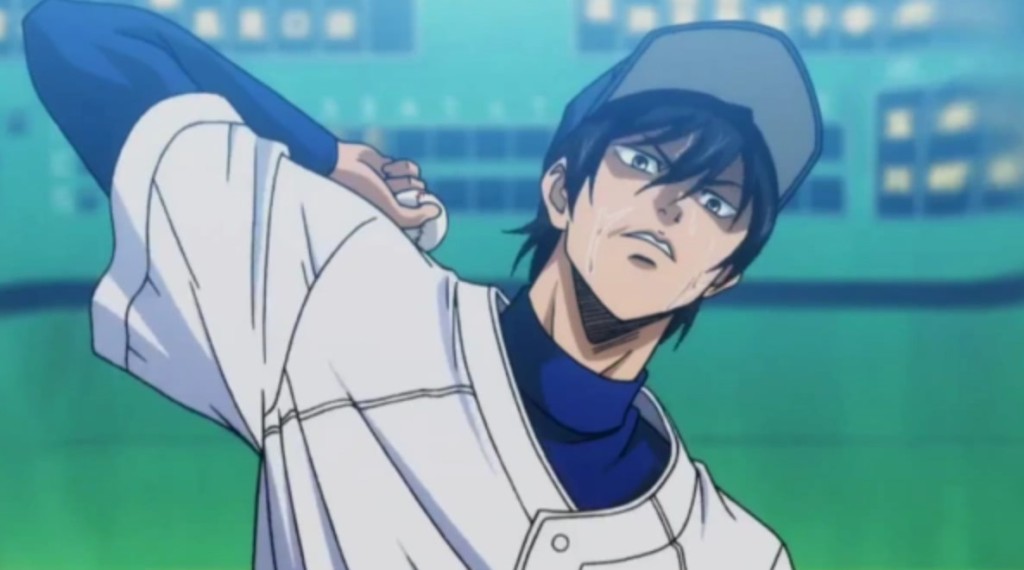
In Diamond no Ace, failure is not just a plot device and not a temporary setback. You can fail, pick yourself up, only to fall prey to another cognitive weakness and fall back into a slump, where you have to look hard at yourself in a more deeper and thorough manner, and devise new ways of trying to improve. Most of Diamond no Ace’s early story centers on Eijun struggling to even participate in matches with the team. We see his rival, Furuya, basically blasting his way through the ranks while he is stuck. In contrast, we look at Eijun fail and fail again. Diamond no Ace also makes the bounce-backs from failure are pretty realistic as well; and the characters don’t suddenly become ‘flared up’ by the presence of their ‘nakama’ (i.e. comrades), and as far as I recall, they only used this excuse once, and this was pretty early on in the story). There is also limited use of plot armour as Eijun is really subject to the same abject trials as just about everybody else in the story.
Diamond no Ace also shows that sometimes in life, there are no second chances. The world of competitive sports is especially cruel, something very small can trip you up and rob you from a second chance. Diamond no Ace is not afraid to pull out the rug beneath you by cutting out characters it had worked hard to introduce and build up, and is realistic in showing that even if one achieves a certain milestone, he still has a very long way to go. Protractors may think this is very ‘anti-climatic’, but it is this dose of realism that keeps the viewers’ exhilaration in check, and makes victory – if and when it comes – all the more sweet.
#4 It shows that people with talent, ability and skill will still have to work hard to stay on top.
Diamond no Ace is a series that takes its time to focus on building up most of its characters. This results in ample time in fleshing out each and every one of them. In a world where our protagonist is not the most special snowflake around, there would, of course, be worthy rivals and teammates that showcase the kind of talent which some viewers argue should have probably made them the main characters instead. But as we have established above, Diamond no Ace does not care much about pandering to conventional plot devices that would guarantee them that level of fame and viewership. Instead, we get a good focus on both the talented and the non-talented. But there is one thing for sure – all of them work equally as hard or harder. And this is where it gets interesting.
Most of the time, talent is used as a powerful plot device – it serves very good deus ex machina purposes in explaining plot conveniences. It can be used in varying degrees and extents to supplement a story that focuses on elevating the underdog to the top. At a more sophisticated level, talent is used to accentuate the prowess of the main rivals of the main team (i.e. they are usually many levels of skill and talent above the main team), making them seemingly so impossible to beat so that it makes the main team’s eventual defeat of them (made possible due to a variety of plot devices and maneuvers) even more impactful to the audience.
Diamond no Ace acknowledges talent, but hardly focuses on it. For example, in the Seido team, Miyuki Kazuya and Chris Yu Takagawa (both catchers for the team) (other than Satoru Furuya, Eijun’s rival) are the only individuals on the team that are widely acknowledged to have talent. Yet, the series doesn’t give them a lot of time to shine – when we got to know Chris, he is already injured and no longer in the main team and takes on mentoring and managerial roles within the team. Even Miyuki Kazuya, one of the main characters (other than Eijun the protagonist), is portrayed to rely more on his logic and tactician-like skills, rather than any innate physical talent (He is said to have a very powerful shoulder, but this is also something that applies to quite a few characters in the story and would not be a sufficient justification to be the sole reason of making the difference to the team).
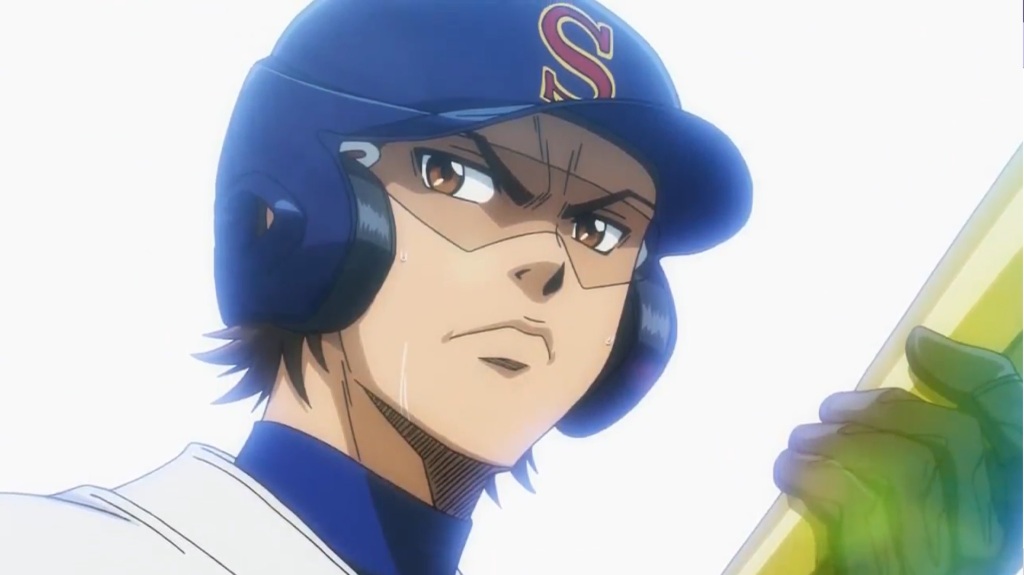
However as it was subsequent revealed in the later part of Season 1, it is revealed that his motivation to go to Seido was actually to challenge himself to be better, and to pit himself against what is known as the all-star team of Mei Narumiya and his group of top batters to see how good he can become. At Seido, Miyuki also does not have an easy time handling all the pitchers due to their different temperaments and skill levels, and does not make accurate calls 100% on the field 100% of the time. And yet, the ongoing challenge is what drives Miyuki to be better, and he genuinely enjoys not playing with the top dogs and being guaranteed victory all the time. He also works doubly hard in all his roles to ensure that he remains on top of the game in every capacity and every hat he puts on.
Interestingly, the same goes for Mei Narumiya, said to be the best pitcher in the Tokyo region. While he appears as the quintessential main rival for Eijun and gang, it is revealed that he has lost to his personal demons previously and came out top, and his journey is not as smooth-sailing as his obnoxious persona seems to suggest. Both Mei and Miyuki are talented, but they are also given more team responsibilities as a result. Diamond no Ace also portrays the conflict between their own pride and desire to be at the top and the responsibility towards their teammates (as they really do care about them despite not appearing), and their unwavering desire to confront and surmount that challenges that lie ahead. As the ‘talented’, they have less room for error and are inadvertently left alone in that lesser people assume that they would never be able to empathise with the ‘average person’s struggles’.
Every single person in Diamond no Ace is a hard worker, and nobody is really overwhelmingly superior to another. We are also constantly reminded throughout the series that the first string positions are in constant flux and the first string people have to keep improving themselves so that the ones gunning for a position behind them don’t catch up to them. This is more apparent in Season 2 as the series progresses into fall as a new team. While most of the show is focused on what happens during the games, there is also a lot of focus on the training that occurs in between. It also focuses on fleshing out the sentiments of the ones that were left behind – the benchwarmers, the ones who aren’t even in the first and second string – and highlights their contributions as well. Arguably, this makes for a more nuanced and realistic difference in skill level as per real life – nobody is guaranteed to have a winning streak all the time, despite natural ability, and the audience learns to appreciate all the different levels of skill and talent more. It also creates a more unique appreciation of what it means to be a support role, and the Seido team genuinely acknowledges those behind-the-scenes efforts.
#5 It has a great OST, great character aesthetic design and great character development
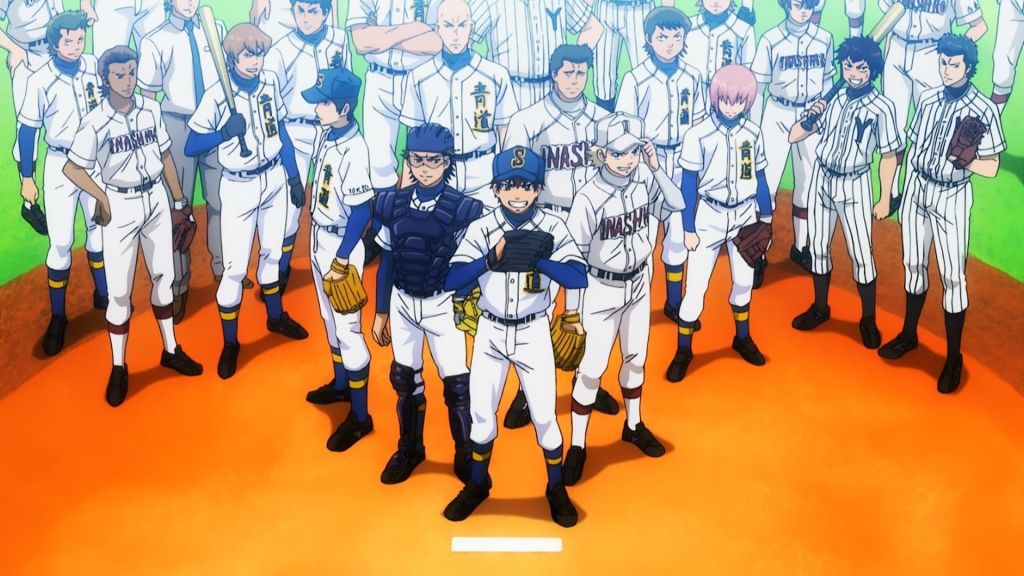
What really completes the enjoyment of Diamond no Ace as an anime is the great battle OST that plays during all the moments of tension, as well as the great character design of the characters. Admittedly, not every character is a bishounen, but I would be fairly surprised if the consensus is that the characters are not ‘good-looking’ enough.
Each character also stands out as unique as the other. Its difficult to even find a favourite character in Diamond no Ace as each of them are just beautiful in their imperfections. Did I also mention that the way the characters are written are also very realistic? They are multi-faceted and hardly conform to their superficial ‘personas’ e.g. the loud-mouthed and ‘entertainer’ type Eijun actually feels a lot of responsibility on his shoulders, ‘self-centered’ Furuya also feels furious when he makes mistakes that cost the team, and the blunt and ‘evil’ Miyuki Kazuya is also extremely focused on bringing out the best in his teammates. And these are just to name a few of those characteristics, as the characters reveal their other sides and grow throughout the series.
Conclusion
For all the reasons above, Diamond no Ace is a more realistic counterpart to most sports anime which may make it harder to get through, but enables its viewers to reap lots out of it when the blood, sweat and tears that its characters pay off. It is a story that tries to defy conventional storytelling and oft-used clichés and does not hesitate to be bold in its approach. While it is definitely not for the faint-hearted, it is at its core, one of the most inspirational stories in both individual and team spirit, and in my honest opinion, personifies what the anime-watching experience should truly be – heavy in its values and life lessons, and a genuine diamond in the rough to all who have had the opportunity to step into it.
Thanks for all of those who read this post till the end! For those who have watched Diamond no Ace, do you agree with the points set out above? For those who have not, would you be encouraged to watch it? Feel free to let me know your thoughts in the comments below. Cheers!

